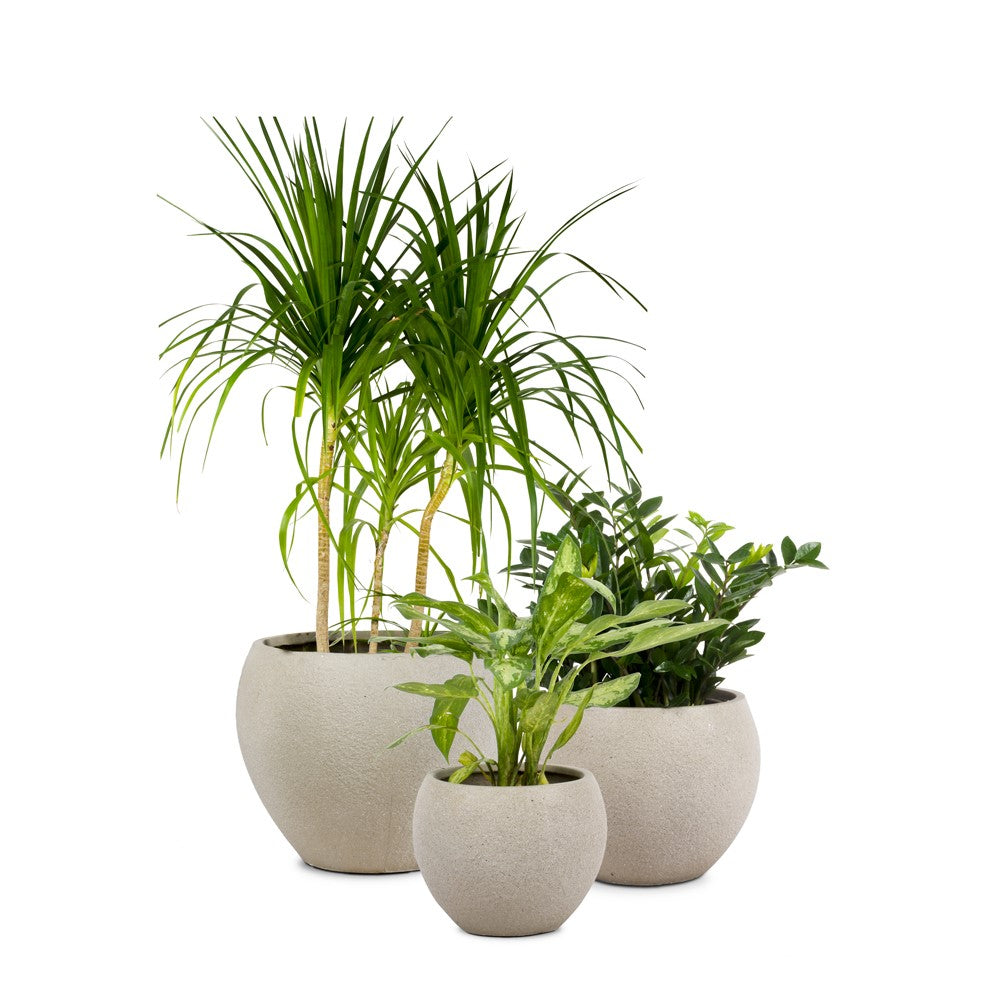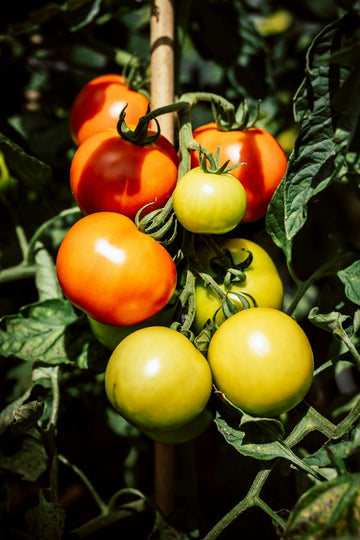Bonsai gardening is the art of growing miniature trees in small containers. It originated in China more than a thousand years ago and has since spread across the world.
In recent years, it has become increasingly popular in India, and it's not hard to see why. Many species of trees that are traditionally used in bonsai gardening, like the banyan tree and the Indian tamarind, are native to India, making it a natural fit.
Popular Indian Bonsai Trees
Banyan Tree | Weeping Fig | Jade Plant | Indian Tamarind | White Mulberry | Orange Jasmine | Chinese Elm Bonsai | Bonsai Care and Maintenance | Bonsai Planters | Watering Bonsai | Feeding Bonsai | Repotting Bonsai | Pruning and Wiring | Pests and Diseases in Bonsai | Planter Recommendations
Banyan Tree (Ficus Benghalensis)

This majestic tree is a native of India and is known for its beautiful aerial roots. It's a hardy species that can withstand the Indian climate. It's also a fast-growing tree, which means you'll be able to see the results of your efforts in no time.
But perhaps the most exciting thing about the banyan tree is its aerial roots. These roots are a defining feature of the tree and can be trained to create intricate and beautiful bonsai designs. With careful pruning and wiring, you can create a tree that looks like a miniature version of a full-grown banyan tree, complete with its stunning roots
(back to top)
Weeping Fig (Ficus Benjamina)

Another popular choice among bonsai enthusiasts! This gorgeous tree has a natural shape with drooping branches that resemble a waterfall. With careful pruning and wiring, you can create a stunning bonsai tree with unique designs.
But that's not all - the weeping fig is also a tough species that can thrive in a range of climates and environments, making it an ideal choice for bonsai gardening in India. It can tolerate both high and low temperatures, as well as different lighting conditions, giving you the flexibility to grow it indoors or outdoors.
You can also shape it into a variety of bonsai styles, such as formal upright, cascade, semi-cascade, and more. This allows you to get creative and create a unique and stunning bonsai tree that reflects your personal style.
(back to top)
Jade Plant (Crassula Ovata)

With its thick, shiny, and oval-shaped leaves, the jade plant is a beautiful addition to any bonsai collection. It thrives in bright indirect sunlight and is ideally placed outdoors.
One of the best things about the jade plant is how easy it is to care for. Unlike some other bonsai species that require careful pruning and constant attention, the jade plant is relatively low maintenance. It can go without water for extended periods and still look healthy and lush. In fact, overwatering is the most common mistake bonsai gardeners make when caring for a jade plant bonsai.
It can also tolerate a range of temperatures, making it well-suited for the Indian climate. However, it's best to protect it from extreme heat or cold by bringing it indoors during the hottest or coldest months of the year.
(back to top)
Indian Tamarind (Tamarindus Indica)
Also known as the "imli" tree, Indian tamarind is prized for its delicate and elegant appearance, with feathery leaves and small pink or yellow flowers that bloom in the early summers. It's also known for its sour and tangy fruit, commonly used in our cuisine.
This tree can tolerate a wide range of growing conditions, from full sun to partial shade. It is capable of surviving in dry and arid environments with minimal water.
The Indian tamarind is also known for its unique trunk and bark. As it ages, the bark becomes deeply furrowed and textured, creating a stunning visual contrast with the delicate foliage. This makes it a perfect species for creating a dramatic bonsai tree.
(back to top)
White Mulberry (Morus Alba)
Known for its lustrous, heart-shaped leaves that turn a brilliant yellow during early winters, the white mulberry makes a stunning addition to any bonsai collection.
One of the great features of the white mulberry is its ability to grow in a variety of soil types, from sandy to loamy. It can also tolerate a wide range of temperatures, making it ideal for outdoor bonsai gardening. It is a fast-growing species, meaning you can quickly shape and train it into the desired bonsai style. It has a unique branching pattern that allows for creative styling options, such as the broom style, where the tree's branches are trimmed to create a flat-topped appearance.
(back to top)
Orange Jasmine (Murraya Exotica)
The orange jasmine has become a popular bonsai species in India due to its small size, stunning white flowers, and delightful citrus scent. This tree is known for its glossy leaves and compact growth, making it a perfect addition to your garden.
It needs to be placed outdoors for it to thrive. It can also tolerate a wide range of temperatures, from hot and humid to cooler and drier, making it an adaptable species that's easy to care for.
You can easily train the orange jasmine to grow in formal upright, slanting, or semi-cascade styles. Its small, delicate leaves and elegant white flowers make it an excellent choice for creating a sense of tranquility and calm in any bonsai garden.
(back to top)
Chinese Elm Bonsai (Ulmus Parvifolia)
Native to China, the Chinese elm has become a favorite bonsai species in India due to its stunning appearance and resilience. It is an excellent choice for creating beautiful bonsai designs due to its small, delicate leaves, attractive bark, and striking branching structure.
One of the great features of the Chinese elm is its ability to adapt to a variety of growing conditions. It grows well in outdoor environments and can withstand both hot and cold temperatures. This makes it a perfect choice for bonsai gardeners who may be dealing with varying weather conditions.
(back to top)
Bonsai Care and Maintenance
It's easy to see why bonsai gardening is a work of art, a living sculpture that requires a lot of care and attention to maintain. Here are the five essential aspects of bonsai care for your mini tree garden.
Bonsai Planters
Click on the image to buy
To ensure that your bonsai thrives, it is crucial to select the right planter. An ideal bonsai planter should meet the following criteria:
- Proper water drainage: The planter should drain water well and quickly to prevent overwatering and root rot.
- Compact size: The planter should be large enough to accommodate the plant and allow room for future growth.
- Controlled growth: The planter should also be small enough to restrict and control the growth of the plant, keeping it confined to the container for a longer period.
- Feet: A bonsai planter should have feet to promote air circulation underneath it and eliminate excess moisture from the soil.
(back to top)
Watering Bonsai

Water is essential for the survival of any plant, and bonsai is no exception. Overwatering can kill your plant, and under-watering can leave it dehydrated. The best way to water your bonsai is to keep a regular schedule. Depending on the type of tree, you may need to water it once a day or once a week. Remember to water it slowly and thoroughly, ensuring that the soil is moist but not waterlogged. Try watering the tree before sunrise or after sunset for better plant growth.
(back to top)
Feeding Bonsai
Just like us, plants also need nutrients to thrive. Bonsai trees require regular feeding to grow healthy and strong. The frequency of feeding depends on the type of fertiliser you use. It's best to use a balanced fertiliser that contains nitrogen, phosphorus, and potassium. You can also mix organic manure such as bone meal and cow dung in the soil. Overfeeding can burn the roots, so be cautious.
(back to top)
Repotting Bonsai
When it comes to bonsai trees, repotting involves carefully removing the plant from its planter, trimming away any excess roots, and refilling the planter with fresh soil before replacing the tree. This process ensures that the bonsai remains healthy and has enough room to continue growing. You should repot your bonsai every two to three years, depending on the growth rate.
(back to top)
Pruning and Wiring
Pruning allows you to shape your bonsai, remove dead branches, and control its growth. Wiring allows you to shape the branches and trunk into the desired form. You should prune and wire your bonsai regularly but be careful not to overdo it. Over-pruning and wiring can weaken your tree and make it vulnerable to pests and diseases. The best time to prune your trees is during summer (between March and September).
(back to top)
Pests and Diseases in Bonsai
Common pests include spider mites, scale insects, and aphids. Diseases such as root rot, powdery mildew, and leaf spot can also affect your bonsai. To prevent pests and diseases, it's essential to keep your bonsai clean and healthy. Regular pruning, watering, and feeding can also help prevent these problems.
When it comes to displaying your pretty bonsai collection, there are many ideas you can work with. Here are a few suggestions to keep in mind:
- Choose the right stand: The stand you choose should complement the bonsai's shape, size, and style. Wooden stands are a classic choice, but there are many other materials available, including metal, stone, and even plastic.
- Find the right spot: Choose a location that receives the right amount of sunlight, as this can affect the growth and health of the bonsai. Also, consider the environment, as exposure to strong winds or harsh weather conditions can damage the tree.
- Create a focal point: Bonsai trees can be used as a focal point in any room, so position them in a way that draws attention to their unique beauty. Consider the bonsai's color, texture, and shape when choosing a spot.
- Use complementary accessories: You can enhance the overall aesthetic appeal of your bonsai by using accessories such as rocks, moss, and figurines. These can add depth and dimension to the display and create a natural, harmonious environment.
- Keep it clean and tidy: Regularly dust and clean your bonsai and its surroundings to keep it looking its best. Removing dead leaves and debris from the soil also helps keep the tree healthy and thriving.
Bonsai gardening is a rewarding and fulfilling hobby that allows you to create stunning works of art from miniature trees. With the right techniques and care, you can create a beautiful display that will captivate anyone's attention. Enthusiasts who enjoy bonsai gardening often describe it as a fulfilling journey that they experience with their trees. Over time, they develop a strong emotional connection and responsibility towards their bonsai, similar to the bond people have with their pets.
(back to top)
Planters recommended for Your Bonsai Plants
Discover more planters for your Bonsai Plants











 At Palasa, we believe in the seamless fusion of nature, design and humanity.
At Palasa, we believe in the seamless fusion of nature, design and humanity.